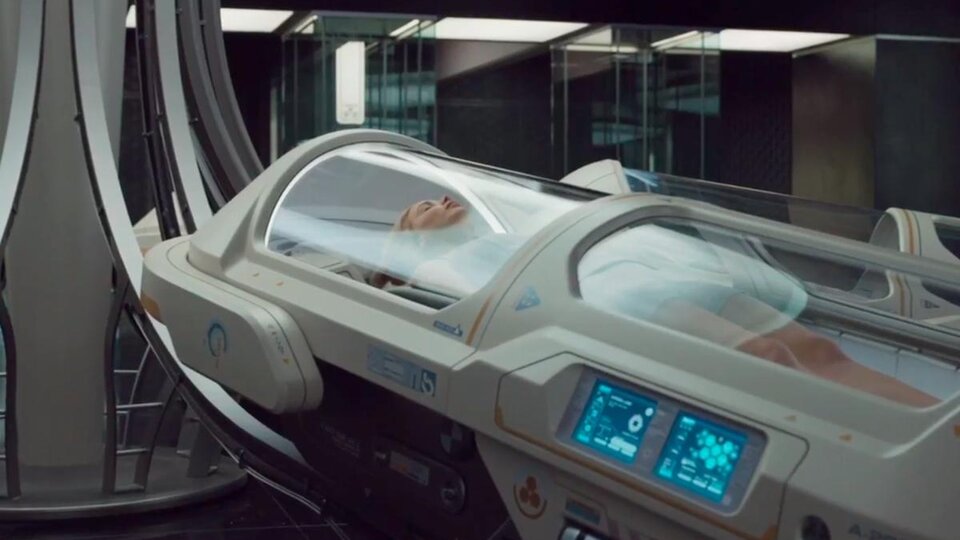He Back to the moon Emerges in and out of the future Jump to MarsA journey that physically and psychologically challenges astronauts and science fiction solves with hibernation, but is it ever possible to “sleep” during space travel?
Human hibernation “may not be a reality in the near future, although it is possible in the long term”Angelique van Ombergen from the European Space Agency (ESA) told EFE.
It has been researched by groups such as neurophysiologist Matteo Cerri from the University of Bologna (Italy) who have been able to induce a similar condition in mice.
Although the popular term is hibernation, it is more correct to speak of torpor.A physiological state in which metabolism is reduced to an extremely low level to survive periods of nutrient scarcity.
Many bears or squirrels and other rodents follow this strategy, which can last from a few hours or days to months. When the smell is very long, it is divided into periods, usually with a small awakening every 24 hours. These long periods of sleep with brief periods of wakefulness are hibernation, Cherry said. And he explained: “Torpor is no longer science fiction. We're the first lab to simulate a process in an animal that can't do it naturally,” the rat.
Positive effects
In animal studies, science has noticed Torpor has “positive effects”. Against some of the dangers humans face in space, ESA's Head of Life Sciences Van Ombergen highlighted. That is why, It is important to know their mechanisms and see if they can be reproduced.
Space is a hostile environment for humans, and ESA is exploring numerous options for astronauts to travel through it. Van Ombergen doesn't rule out that in 20 or 30 years, for “really long missions,” hibernation “may actually be a viable option.”
Astronauts in zero gravity develop muscle wasting, while bears do not suffer from it when they wake up. The same thing happens with bone mass loss: In the face of developing osteoporosis in humans, animals maintain their bone structure, Cherry pointed out.
Cosmic radiation is known to be very harmful to astronauts' health, van Ombergen said, but animals in torpor are “very protected from potential harm.”
He recalled that the long months or years of space travel posed significant psychological challenges for astronauts.With feelings of isolation or claustrophobia from being confined in a small space, They can be reduced if part of the journey is done while asleep.
Space travel with 'sleeping' passengers and a very low metabolism has advantages from a logistical and economic point of view. The reduced need for water and food – he emphasized – reduces the weight and cost of goods.
Inducing torpor in humans is “not something that's around the corner, but we're working on it,” Cherry said, though he hinted at a second possibility.
Understanding how some of its mechanisms work and using them independently, for example, creating a process that keeps muscles active or protects against radiation, so there is no need to induce torpor throughout the organism. A selective application, perhaps pharmaceutical”.
How is it triggered?
To find a way to get to that point, you first need to know what triggers it. How the brain initiates a sequence of events that causes the body to consume less oxygen, particularly in certain areas related to temperature regulation and metabolism.
Cherry, who is working with the ESA, has detailed various research studies on which point of this circuit works best with the least side effects.
His team used A molecule that “actually turns off” a small group of neurons. Other researchers have used other molecules across the brain or ultrasound, and combinations of drugs and hypothermia have also been investigated, which lead to reduced tissue metabolism.
Van Ombergen noted that this condition was already induced in mice by six hours.
But you also need to understand how the body wakes up. “In our synthetic models,” Cherry explained, “it's enough to pause what's been done, but we don't know if it's going to stay the same for a long time, and that's why they're looking at “where they want to see awareness.” The key is hidden, “how and when. The brain dictates.
Medical applications
During torpor the body behaves in a special wayFor example, the brain's electrical activity is very different from sleep, unconsciousness, or coma. Earth may also have medicinal benefits.
Cherry assesses More time can be given to patients who need a transplantFor example, in acute fulminant hepatitis, Some tumors can be resected or used in some types of more invasive surgery.
Also, the animals develop changes “similar to what occurs in Alzheimer's,” but when they wake up the brain returns to its previous state and improves its performance. “Understanding how they return to normal may hold some of the keys to dealing with this disease.”
sure, Torpor opens a window of opportunity that makes certain treatments more effective.

